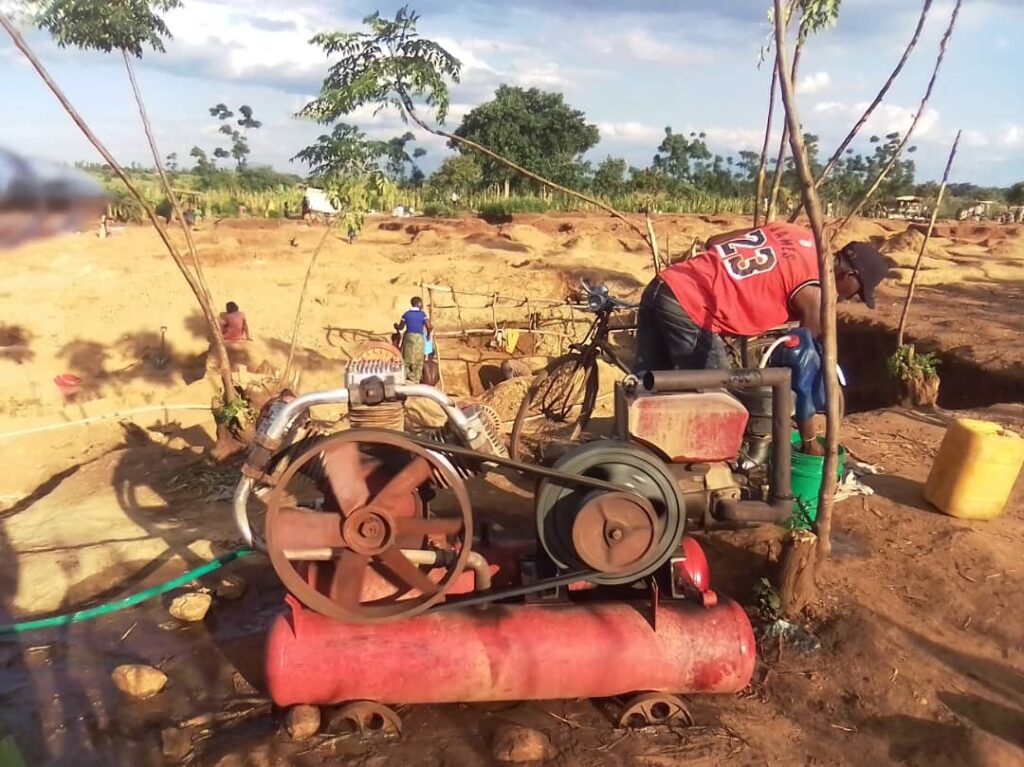
Mining & Trade News
Malawi Online News
Top Stories
Mining
Hiccups dog small scale gold mining in Southern Malawi
March 18, 2024 / Francis TAYANJAH-PHIRI

Small-scale miners in the newly discovered gold mining hotspots in Southern Malawi are encountering a myriad of challenges including lack of training on sustainable mining practices and utilisation of primitive mining equipment, which are negatively impacting on their production and causing serious environment degradation in the mining sites.
Mining & Trade Review visited Milepa in Chiradzulu, and other near-by hotspots of Zomba and Mulanje along the Namadzi River including in Moleni and Chikomwe Villages in Traditional Authority (T/A) Mbiza area in Zomba, and Mgunda Village in T/A Mpama in Chiradzulu – along the Mwaye river, which is a tributary of the Namadzi River.
“Just look around this whole mining area, people are using picks and shovels and relying solely on guess work to decide where to excavate. Had it been that they had gold detectors they would easily spot the right places to extract gold and so too if they had mechanized digging equipment, they would save time and reap big,” said Yamikani Maduka, chair of the grouping of small scale miners in the area in an interview at the Moleni site.
He, just like others interviewed, called for support from the Malawi Government to overcome their problems and scale up production from the area, which is producing gold of good quality.
Artisanal and Small Scale Mining (ASM) activities in these areas started in November last year and have attracted people from different areas including foreigners who are renting portions of plots to conduct mining activities from traditional land owners.
“We rent a portion of land measuring 1 by 4 metres at K140,000, and because we do not have gold detectors, it is a gamble as we may not get the intended return. Mostly I have 25 to 30 people doing the digging for me, and I pay them K2,500 per day. I also pay some people engaged in earth moving K2,000 per each, and provide food for them daily, it is quite an expensive venture,” said Honest Chitimbe, a Mozambican our reporter interviewed at the site.
He said a network of friends alerted him of the gold potential in the Milepa area, and he risked the odds to come and embark on the venture.
“We sell the few grams of gold we find to buyers who come here, who in turn sell to Export Development Fund, and other buyers they know,” said Chitimbe.
Another ASM Damson Chimphamba said they sell their gold to buyers at K100,000 per gram; and can acquire between 8 to 12 grams from the portions they buy at K140,000.
“If we have proper expert advice and machinery, especially detecting and digging ones, we would obviously make more profits, hence improve our livelihoods. I have two portions measuring 2 by 2 metres, I have since made a loss on one, and a profit on another,” he said, urging government to come in to equip the locals with necessary mining technologies.
Black Gondwe, a miner and buyer of gold, said the gold deposits in the area would have improved the welfare of the locals if proper machinery was available.
Gondwe said: “For instance, in our case, we employ diggers, buy gold from local miners, and sell to EDF. We buy the gold at K100,000 per gram, but considering that there is no proper equipment, the job of finding right volumes of gold, is cumbersome.”
“Of course I am one of the few people who use machinery [compressor and water pump] to process the gold grains. However, using primitive equipment for excavation is hard, and it is why we need machinery,” said Gondwe.
The Malawi Government is, currently, formalising small scale miners in the country into cooperatives so that the ASMs should be easily identified, licensed and provided with technical and business training, and financial opportunities whenever it is feasible.































